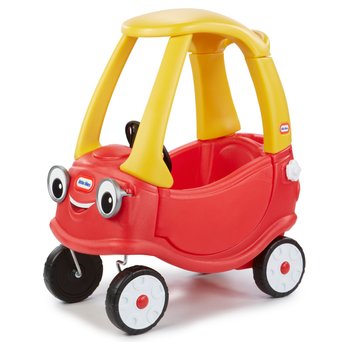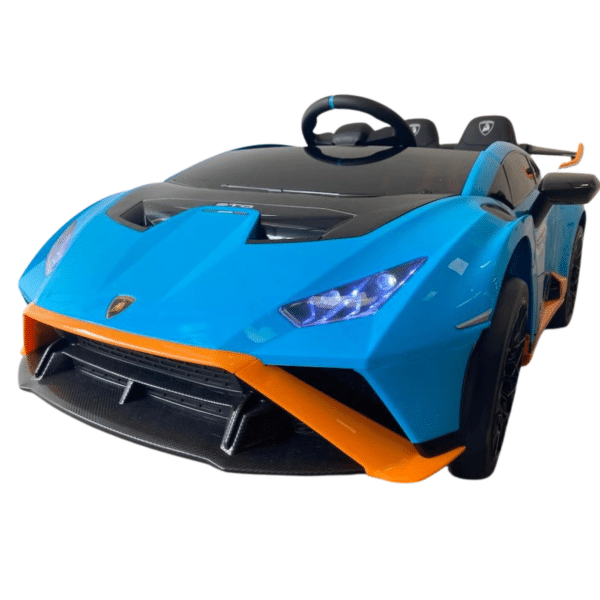Recommended Tips To Selecting Ride On Toys
Wiki Article
What Should I Know About The Battery Life And Charging Times Of An Electric Kid Ride-On Vehicle?
It is crucial to know the life span of your battery for your electric ride-on vehicle for children and the time it takes to recharge. This will guarantee that you have uninterrupted playtime. What you should know - Battery Type
Most electric ride-on cars for kids utilize rechargeable batteries, which are typically lead-acid or lithium-ion batteries. Lithium-ion batteries usually have a longer battery life and faster charging times compared to lead-acid batteries.
Battery Capacity -
The time of operation for a ride-on car is determined by the battery's capacity. This is measured in amp-hours or Watt-hours. Batteries with higher capacity provide longer time between recharges.
Run Time -
The runtime of an electric car is how long the vehicle can run continuously on one battery charge. This can vary depending on a variety of factors, including battery capacity, motor power, the terrain, and weight of the driver.
The typical time to run electric ride-on vehicles ranges from 30 minutes to 2 hours. But, lithium batteries that are high-capacity will provide longer running time.
Charge Time
The charging time refers to the time it takes to completely charge the battery once it is depleted. Charging times may vary based upon battery capacity or specifications for the charger.
In general, the charging times for electric ride-on vehicles vary between 8 to 12 hours for a full charge. Certain models could provide faster charging times, specifically with lithium-ion batteries.
The battery's security and longevity can be ensured by adhering to the manufacturer's charging recommendations. Battery performance and longevity may be affected by charging too much or undercharging.
Method of Charging
Most electric vehicles include a charging cable which plugs directly into the outlet of your home. Some models can have rapid charging capabilities or a smart charger that monitors the battery's state of charge and adjusts the charging speed accordingly.
Verify that the connectors and charging port on the ride-on cars are compatible to avoid any damage to the battery or electrical components.
Additional Batteries
Certain electric rides on cars offer the possibility to purchase additional batteries or spare batteries to play for longer periods of time. Additional batteries let you recharge batteries that are depleted by fully charged batteries, which can reduce downtime.
If you know the charging time and battery life of an electric kids' car and your child can have endless hours of play and adventure. Continuously charging the battery and following the correct charging procedures will help maximize battery life and performance. Have a look at the best Audi kids car for more advice including childs ride on car, childs car toy, digger ride, childs electric ride on car, electric ride on cars, car toy toy, toy car, a toy car, toy ride, electric toy car and more. .

How Can Kids Car Models Be Used Indoors And Outdoors?
The specifications of models designed for outdoor and indoor use differ. This is how the designs differ from indoor Use Cars The Indoor Use Cars
Size and Weight Cars that are designed for indoor use tend to be smaller and lighter in weight to maneuver easily within confined spaces such as playrooms, living rooms, or hallways. They are compact enough to navigate narrow spaces and corners without causing damage to furniture or walls.
Low Ground Clarity Vehicles in indoor environments have low clearances so that they don't get stuck, or snagged, on obstructions, like carpets, rugs or thresholds. This allows for smooth and free mobility across indoor surfaces.
Smooth Wheels - The wheels of indoor-use cars are often composed of smooth materials such as plastic or rubber to provide traction and grip on smooth surfaces such as hardwood floors, laminate flooring or tiles. They are made with the least amount of noise to avoid scratching and scuffing on indoor surfaces.
Temporary Speed - Indoor use vehicles typically have lower maximum speeds to ensure safe and controlled operation within restricted spaces. This can help to prevent collisions and accidents with walls, furniture or other objects found in indoor areas.
Outdoor Use Cars -
Construction that is durable - Outdoor vehicles are built using durable materials like steel or tough plastic to withstand the rigors of handling and the elements of nature, including temperatures, humidity, and sunlight fluctuations. They are more resistant to wear and tear from exposure to outdoor conditions.
The greater the clearance on the ground is, the more able to handle bumps and uneven terrain. They can navigate rough terrains such as gravel, pavement grass, dirt, or grass without getting stuck or damaged.
Traction Tires - The tires on outdoor use cars are often fitted with treads or patterns in order to provide better traction and grip on uneven or slippery surfaces. This helps ensure stability and control when driving on outdoor terrain and prevents sliding or skidding.
Weather-resistant components - Cars for outdoor use may include weather-resistant components like sealed electronic components with waterproof casings, or corrosion-resistant materials. These components safeguard the car from moisture and environmental damage. These cars can handle the elements of rain, mud and even puddles with no loss of performance.
Higher Speed - Outdoor use cars usually have higher maximum speeds to make room for open spaces as well as longer distances that are often encountered in outdoor environments. This provides a more exhilarating and adventurous riding experience for kids who are exploring outdoors.
Parents can pick a car for their kids that is suitable to their requirements, whether indoors or outdoors, by evaluating the design and features. This will ensure the safety, enjoyment and long-lasting play experience. Follow the most popular find out more on remote control childrens cars for blog advice including toy cars, pedal car, car for toy, childrens ride on, race car toy car, two seater electric cars, car for toy, toy a car, remote control childrens car, toy and car and more. .

How Do You Decide On The Budget For Your Ride-On Child's Car Purchase?
When making a decision on your budget, it is important to take into consideration features, durability, longevity as well as your financial situation. Find the most affordable price for your budget by doing some research into the average price.
You can start by researching the average price of the children's ride-on vehicles with the features you desire. Online retailers, toy stores and manufacturers' websites may give pricing information for various kinds of vehicles.
Choose the most important features to have Find Must-Have Features
Think about the features most important for your child's safety and pleasure. Ride-on cars with features like realistic sound effects seats, seat belts, remote control, and functioning headlights may be more expensive.
Prioritize the features you want to use by comparing your budget with your child's preferences.
Think about Durability and Longevity
Ride-on vehicles should be constructed of durable materials, including plastics and metals. They should also be able to withstand the elements.
Read reviews and seek recommendations from other parents to assess the longevity and durability of different models. An investment that is more upfront in a well-built ride-on car could result in savings over the long term through a reduction in repairs and replacements.
Compare Prices from Different Retailers
Compare prices and get the best value. Online retailers, local toy stores, department and specialty stores may offer low rates.
Watch for discounts and clearance sales that will help you save money without sacrificing quality.
Add in additional costs -
If you're considering the possibility of a ride-on car for your child, take into consideration the additional costs, including the cost of shipping tax and accessories.
Budget for the total cost that includes any equipment or maintenance costs.
Create a realistic budget
A budget that is realistic must be established based on your requirements, priorities and the findings of your study. Decide the maximum amount that you're willing to spend on an automobile as well as considering the durability, endurance and other options.
Be careful not to stretch your budget to the limit or spending money on unnecessary equipment that won't add any worth to your child's experience.
Consider the Long-Term Value
Analyzing the value over time of the ride on kid's automobiles in terms of its quality, durability and the capacity of your child to grow. In the long run purchasing an expensive, feature-packed car could be more advantageous than less expensive alternatives.
You can score the best price on a ride-on vehicle for your kid by setting an amount, comparing features, durability and long-term durability, and then establishing the budget. Focus on prioritizing features that matter most to your child's happiness and safety while preserving the limits of your budget. Read the top remote control childrens cars kidscars.co.uk info for blog recommendations including toy cars, remote control childrens electric cars, two seater electric cars, childrens ride on, childrens ride on, ride on toy, kiddies cars, toy the car, electric two seater cars, toy cars toy car and more. .
